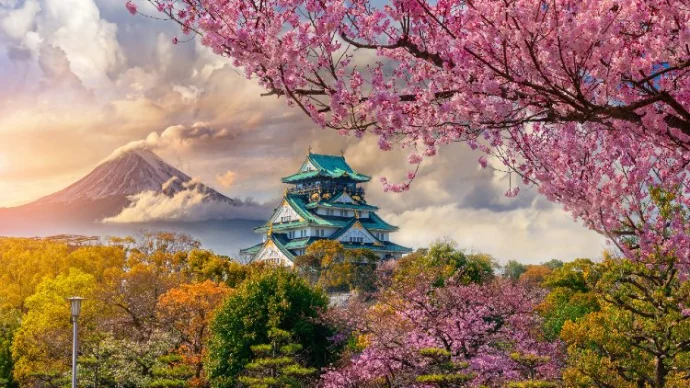
About Senso-ji Temple
The Senso-ji Temple is Tokyo’s oldest Buddhist temple. Dedicated to Kannon Bosatsu, the Bodhisattva of compassion, it’s the world’s most visited spiritual site.
History of Senso-ji Temple
Senso-ji is built around an image of Kannon, which legend has it was pulled from Sumida-gawa by two fisherman in 628AD: whilst it’s not on display today, it’s stood in the same place since the temple’s construction in 645AD.
From the 12th century onwards, the shoguns of Japan showed increasing devotion to Senso-ji. Following their lead, so did other prominent figures in society, and the importance of Senso-ji continued to grow. In 1590, the first Tokugawa shogun, Ieyasu, designated Senso-ji as the temple where prayers of the shogunate would be offered. His successors paid the same respects and frequented the temple, leading to the widespread popularity of the Kannon during the Edo period.
As with much of Tokyo, the original temple structure was destroyed in air raids during the Second World War – the current temple dates from 1958. Japanese culture places less emphasis on the use of entirely original materials, and much more on the idea of replacing and restoration using traditional craftsmanship and matierals.
Senso-ji today
Senso-ji is always busy: it receives around 30 million visitors a year. If you want to visit at a more peaceful period, aim to come in the evening: the temple also looks particularly lovely illuminated.
To enter, you’ll probably walk up Nakamise-dori, a busy shopping street, where you can find trinkets, offerings and prayers to present at the temple. Look out for the five-storey pagoda (the second highest of its kind in Japan), and the shrine built for the fishermen who discovered the Kannon statue – it’s called Asakusa-jinja. It’s the only surviving structure on site, dating back to 1649, and a great example of early Edo architecture.
Be sure to check in advance if there are festivals going on as Senso-ji gets particularly busy at these times.
Getting to Senso-ji
The nearest station to the temple is Asakusa: it’s easily accessible via metro from central Tokyo. From there, it’s a short walk to the temple itself: no vehicles are permitted within the grounds. If you prefer getting a taxi, it’s about 5km north of Ginza: traffic can be slow, but every taxi driver in the city will know where you’re going.
Featured In

Japan Historic Sites
Japan, the land of the rising sun, is home to stunning temples, monuments, and castles. Here's our pick of sites you shouldn't miss when paying a visit.



















